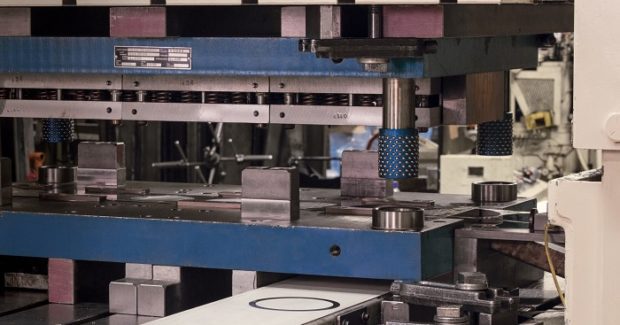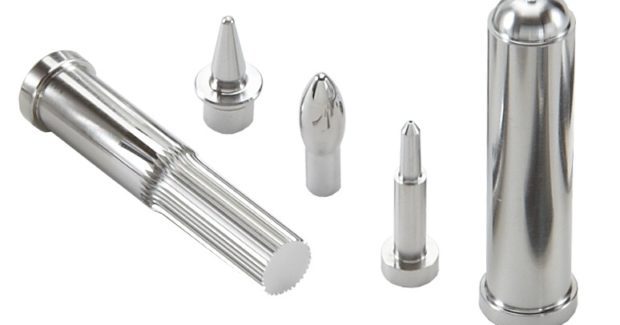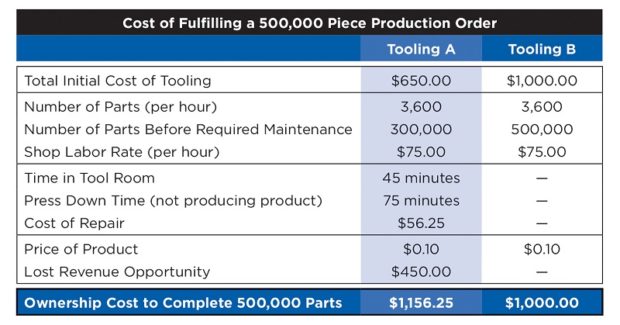An Overlooked Way to Keep Up with Industry Change
Press operation requirements, inspection needs, improved die technology, tool room utilization and lean initiatives are all transforming the way shops compete. But what if you can’t keep the die in the press because of cheap tooling?
Posted: August 16, 2018
As the old adage goes: the only time you make money is when your press cycles. So how do you keep your press cycling amid the pressures of today’s changing industry? Over the last 20 years, there have been a number of evolutions in stamping that directly impact your press time as well as your bottom line. Factors such as press operation requirements, inspection needs, improvements in die technology, tool room utilization, global competition, customer order trends and lean initiatives are all transforming the industry. Here’s how manufacturers are keeping up.
Some of the biggest industry changes stem from advances in finished goods materials like AHSS. Lightweighting and strengthening have brought new challenges to existing industry practices and, in response, press manufacturers have developed a variety of methods to improve press efficiency. Upgrades in strokes per minute, servo motors, safety advances and/or monitoring technology have all been implemented to respond to new demands. Inspection methods are faster than ever and often utilize such technologies as lasers, cameras and smart die sensing. Die development has impacted targeted lubrication, ball bearing die sets, Fortel and other die set upgrades. All these innovations have afforded greater efficiency in both throughput and safety so that shops can stay relevant.
Another challenge impacting the industry has been the rapid revision of product designs and reductions in part-run volume in accordance with customer demands. Dies have moved from long-term usage to earlier obsolescence. Lean manufacturing, Single Minute Exchange of Die (SMED) and “Just in Time” are all philosophies that are useful for meeting these ever-evolving customer demands, as the amount of time it takes to get from one job to the next and how much time the die is running are critical concerns for everyone. How else do we stay competitive within this environment? In your tool room, you have likely added new wires, machining centers, inspection equipment and programming software in order to improve throughput and achieve efficiency gains. On the press floor, you have likely made changes to the die, press and order flow. You have also possibly implemented programs and processes to improve the productivity of your labor force.
Have you considered upgrading your tooling? Advances in punches and die buttons have been occurring just as rapidly as in the rest of the industry. Tool steels, coatings and surface finishes have been optimized to improve tool life and keep a die in the press longer. What if you could run a die for an entire production order and then changeover to a new tool? You could perform preventive maintenance while running other products and not interrupt production. Stampers with the right tooling are doing it now. Often times, punches and die buttons are purchased using an outdated theory: reduce the cost of the die where you can and buy tooling cheap because it’s perishable. These practices just don’t match up to today’s demands.
Consider the example of a broken tap. Everyone knows there is nothing worse than breaking a tap. All that time is wasted, not only to fix the part the tap broke in, but also replacing the tap. Not only is production time lost, but the number of parts completed takes a hit. Would you or your shop recommend buying the cheapest taps? Probably not. If you’re willing to spend money upfront to keep the machining centers running with premium cutters and taps, why don’t you consider other “perishable” items? Punches, die buttons, springs and the like are often the least reviewed components but are frequently the reason production stalls. Why not spend resources and time on these items? Any experienced toolmaker will agree that cutting corners on tooling only costs more money later.
One of the top reasons a die goes down is that it’s cheaply made. Shops will sometimes choose to reduce some upfront hard costs in favor of the soft costs associated with manufacturing, but a cheaper upfront cost is not always economical in the long run. Many shops demand to see double or even triple the tool life to justify adopting a more expensive die; however, it’s important to consider more than the upfront tool cost alone. When a broken or worn out tool shuts down the die, you are no longer making money. Every minute it takes to replace a punch equals money lost. Consider all of the soft costs that go into bringing the die back online and add it to the lost revenue. You’ll see that even a 25 percent productivity gain in tooling warrants the extra up-front costs. Who is your purchasing decision-maker? Do your engineers or tool room experts have purchasing power, or at least a voice in the decision? Everyone’s goal is the same: keep the cost down. But how you reach that goal can vary from department to department, and it’s important to have the input of those who understand the value of tooling.
Tooling today can be designed to meet finished product demands, not only in hole shape and form, but also to match the forces being created by the new advanced high strength steels. Starting with the die design, many of the problems you will see during production can be avoided by evaluating punch options with your tooling suppliers and die builders. Can’t keep the die in the press today? Look at what tooling you currently have and consider changing tool steel, adding coatings or maybe even altering the finish to keep the press up and running. These are all modifications that you can make to a punch so it lasts longer. In the end, the goal is to run through an entire production order and maximize your press uptime. By taking the time to bring your tooling up to date, you will see the gains in the bottom line.















